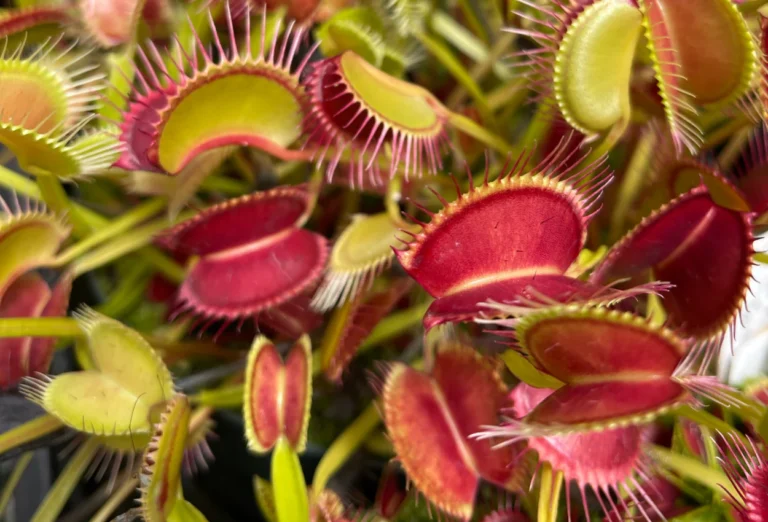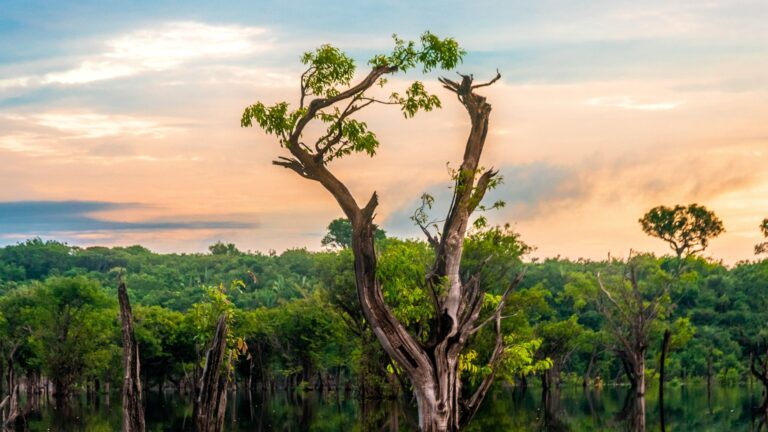Imagine a world where the air is filled with the sweet scent of blooming flowers, the trees sway rhythmically to the gentle breeze, and birds’ songs provide the perfect symphony to an enchanting setting. This isn’t a fictional realm, but the great outdoors, an open museum of nature’s bounty. In our upcoming discussion, we will be unraveling the sensory experiences offered by Mother Nature, a topic so profound, yet often overlooked.
In ‘Nature’s Symphony: Exploring the Five Senses in the Great Outdoors,’ we journey through the landscapes of our Earth, basking in the sensory delights that it provides. We will delve into the science and philosophy behind these sensory experiences, from the sounds that echo through the wilderness to the vibrant colors and patterns that dot our natural scenery. It’s an opportunity to appreciate nature’s artistry from a fresh perspective.
Our exploration doesn’t end there. We will also discover how engaging our senses in the natural world can benefit our mental and physical health, proving that spending time outdoors isn’t just a recreational activity but a necessity for our well-being. We will also share practical advice on how you can make the most of your outdoor experiences, regardless of where you are.
So prepare yourself for an enlightening exploration of the world around us. By the end, you will not just see nature; you will feel, hear, smell, and even taste it in ways you never have before. It’s time to truly immerse yourself in nature’s symphony. 🍃🌼🐦🍂🌳
The Auditory Experience in Nature
The auditory experience in nature goes beyond mere sound—it’s a gateway to presence and mindfulness. In contrast to the mechanical hum and constant buzz of urban life, natural environments provide a dynamic, ever-evolving soundscape that invites us to slow down and listen deeply. Each ecosystem has its own acoustic identity. The chirping chorus of frogs after rain, the distant thunder rolling over a mountain range, or the rhythmic crashing of ocean waves—all tell stories of the landscape’s rhythm and life.
Morning in the wilderness often begins with the “dawn chorus,” a spectacular moment when birds of various species fill the air with song, marking territory or calling to potential mates. This natural concert can vary with season and location, making each morning unique. As the day progresses, new sounds emerge—the buzz of bees collecting nectar, the rustle of small mammals in the underbrush, or the soft flutter of butterfly wings near flowering shrubs.
In certain cultures, listening to nature is more than poetic—it’s a practice of attunement and respect. Indigenous communities around the world have long relied on the sounds of nature to understand seasonal changes, detect approaching animals, or predict weather patterns. In this way, the auditory dimension of the natural world is not just enriching, but practical and ancestral.
For those seeking a deeper connection with nature, soundwalking—an intentional practice of walking slowly and attentively while focusing solely on the auditory environment—can be transformative. It tunes the ears to frequencies we often ignore and fosters a deeper sense of unity with our surroundings. Whether it’s the distant rumble of thunder or the delicate plink of raindrops on leaves, every sound in nature is part of an intricate, living orchestra waiting to be heard.
Soundscapes: The Unique Signature of Places
Just as each location has its unique visual characteristics, so too does it have its distinct soundscape—an auditory fingerprint, if you will. This is what acoustic ecologists refer to as the soundscape, the collection of sounds that emanate from an environment. From the chirping of crickets in a field to the rush of water in a mountain stream, each soundscape provides a unique sensory experience and connection to the environment. Listening to these soundscapes can also have a calming effect, lowering stress levels and promoting relaxation.
Visual Stimulation: The Power of Nature’s Colors
The natural world is a feast for the eyes, a palette of colors, shapes, and movements that create a dynamic visual experience. Whether it’s the vibrant hues of a sunset, the intricate patterns of a butterfly’s wings, or the stark contrasts of a winter landscape, nature’s visual elements are not just beautiful; they’re transformative.
Patterns and Textures: A World of Detail
Beyond color, nature offers a rich tapestry of patterns and textures that captivate the eye and engage the mind. These subtle yet profound details, often overlooked in our hurried lives, reveal the hidden order and intelligent design embedded in the natural world. From the geometric precision of a honeycomb to the spiraling grace of a seashell, nature’s patterns are not merely decorative—they serve purpose, function, and beauty in perfect harmony.
Take, for example, the concept of fractal geometry, which manifests in the branching of trees, the formation of river networks, and the delicate veins of a leaf. These repeating, self-similar patterns allow nature to maximize efficiency and structure within limited space. A fern unfurling reveals smaller versions of itself within its own leaves—an elegant expression of repetition and scale that mirrors mathematical logic in an organic form. Observing such intricacy awakens a sense of curiosity and humility, reminding us that nature is a master engineer as well as an artist.
Textures, too, tell stories. The rough bark of an ancient oak speaks of resilience and age, while the velvety softness of a moss-covered stone evokes a sense of calm and gentleness. Running your fingers across different textures in nature can transport you into the present moment, grounding your senses in a tactile experience that is both meditative and revealing. Each surface—whether cracked, smooth, spiny, or sticky—tells a story of adaptation, climate, and purpose.
In desert environments, we find patterns in the ripples of wind-swept sand dunes, each curve shaped by the invisible brush of the breeze. On a beach, the whorls of seashells, the delicate ridges of coral fragments, and the concentric circles of tide pools create a visual language that speaks to the patient, repetitive motions of time and tide.
Even the animal kingdom abounds with natural patterning. The camouflage stripes of a tiger, the hypnotic eyespots on butterfly wings, or the speckled plumage of an owl are not only stunning to behold but serve crucial roles in survival—be it attracting mates, deterring predators, or blending into the environment. These patterns remind us that in nature, beauty and function are often one and the same.
For those with an observant eye, seasonal textures also come alive. The brittle crunch of autumn leaves underfoot contrasts with the slick, spongy ground of spring. The icy lacework of frost on a windowpane, the sticky sheen of sap in summer, or the fuzzy buds of early spring all offer moments of sensory richness waiting to be discovered.
To fully appreciate these details, one must slow down, look closer, and tune in. Nature rewards those who are patient and present. Whether through the lens of a camera, the stroke of a sketchbook, or the quiet observation of a curious mind, exploring patterns and textures can be a gateway to a deeper connection with the natural world.
In a world dominated by screens and smooth surfaces, immersing ourselves in nature’s textures invites us to reconnect—to feel the pulse of the Earth not just beneath our feet, but through our fingertips and into our hearts.
Nature’s Touch: The Tactile Experience
Nature engages our sense of touch in profound and grounding ways. Each texture we encounter in the great outdoors tells a story—from the brittle crispness of fallen autumn leaves to the deep grooves of ancient bark that reveal a tree’s age and resilience. Soft patches of moss underfoot invite us to slow down and savor the gentle luxury of the forest floor, while the smooth, cool surface of a river stone offers a moment of quiet reflection. These tactile interactions awaken a primal connection, reminding us that we, too, are part of the natural world.
Engaging with nature through touch can also have therapeutic benefits. Studies show that physical contact with natural surfaces can reduce stress, lower heart rates, and promote feelings of calm. Activities such as gardening, walking barefoot on grass, or simply running fingers through sand encourage mindfulness and a sensory dialogue with our environment. In this way, the textures of the earth offer more than aesthetic pleasure—they provide a tangible link to the present moment and a deeper appreciation of nature’s intricate details.
The Impact of Touch in the Outdoors
In an increasingly digital world, physical interaction with nature offers a grounding experience. Touch can stimulate the release of endorphins, the body’s natural painkillers, which can alleviate stress and promote a sense of wellbeing. Moreover, many outdoor activities, such as gardening or hiking, involve a tactile component that engages the sense of touch, reinforcing our connection with the environment.
The Scents of Nature: An Olfactory Journey
From the fresh scent of a pine forest to the sweet fragrance of wildflowers, natural environments can provide a rich olfactory experience. The variety of scents in nature not only enhances our sensory perception of the outdoors, but can also have therapeutic effects. In fact, the practice of forest bathing, or shinrin-yoku, emphasizes the inhalation of phytoncides, airborne chemicals released by trees believed to boost the immune system.
Aromatherapy in the Wild
Many of the essential oils used in aromatherapy are derived directly from plants thriving in their natural environments. When we walk through a pine forest, stand in a grove of eucalyptus trees, or wander through a field of blooming lavender, we’re not just enjoying a pleasant stroll—we’re engaging in a natural aromatherapy session. These environments release volatile organic compounds, such as phytoncides and terpenes, into the air—compounds known for their calming and revitalizing effects on the human body.
Inhaling these natural aromas can lower cortisol levels, reduce anxiety, and even boost immune function. Studies have shown that the simple act of spending time in scented natural spaces can improve mood and mental clarity. Unlike synthetic fragrances, which often overwhelm the senses, nature’s scents are subtle yet potent, designed not to overpower but to soothe and restore. Whether it’s the sharp, refreshing scent of mint leaves crushed underfoot or the warm, resinous perfume of cedarwood carried by the breeze, these natural fragrances reconnect us with the Earth’s healing essence—reminding us that wellness begins in the wild.
Nature’s Taste: Wild Edibles and Foraging
Finally, there’s the sense of taste. While we often don’t associate taste with the outdoors, nature provides a bounty of wild edibles that can add a new dimension to our sensory experience. From the tartness of wild berries to the earthiness of edible mushrooms, foraging for food in the wild can be a rewarding and enlightening experience.
The Art of Foraging: A Taste Adventure
Foraging is more than a culinary pursuit—it’s a mindful interaction with nature. It involves recognizing edible plants, understanding their seasonal rhythms, and harvesting them responsibly. This practice fosters a deeper connection to the land and offers a unique way to experience the distinct flavors of each season and region. Whether it’s wild berries in summer or earthy mushrooms in autumn, foraging lets us literally taste the landscape, turning a walk in the woods into a flavorful and enriching journey.
Conclusão
In conclusion, “Nature’s Symphony: Exploring the Five Senses in the Great Outdoors” invites us to indulge in an immersive experience that awakens our senses to the marvels of nature. The vivid descriptions awaken our sensory perceptions, compelling us to appreciate the subtle, yet profound, symphony of the natural world. Nature’s music is not just limited to the twittering of birds or the rustling of leaves, it extends to the tactile feel of the bark, the scent of the wildflowers, the sight of the changing seasons, and the taste of fresh berries.
This article elucidates the therapeutic benefits of outdoor experiences, strengthening the connection between nature and our well-being. It is an urgent call to action to conserve our natural environment, a source of solace and inspiration in a world constantly on the move. Let’s embrace the symphony of nature, let it rejuvenate our senses and enrich our life experiences. This is a fantastic reminder that nature is not just a backdrop to our lives but an essential part of our existence.
In a world dominated by screens and artificial sounds, it’s high time we immerse ourselves in the melody of nature, and listen to its symphony with all our senses. So, step outside, take a deep breath and let nature’s symphony play on. 🍃🎶🌼



